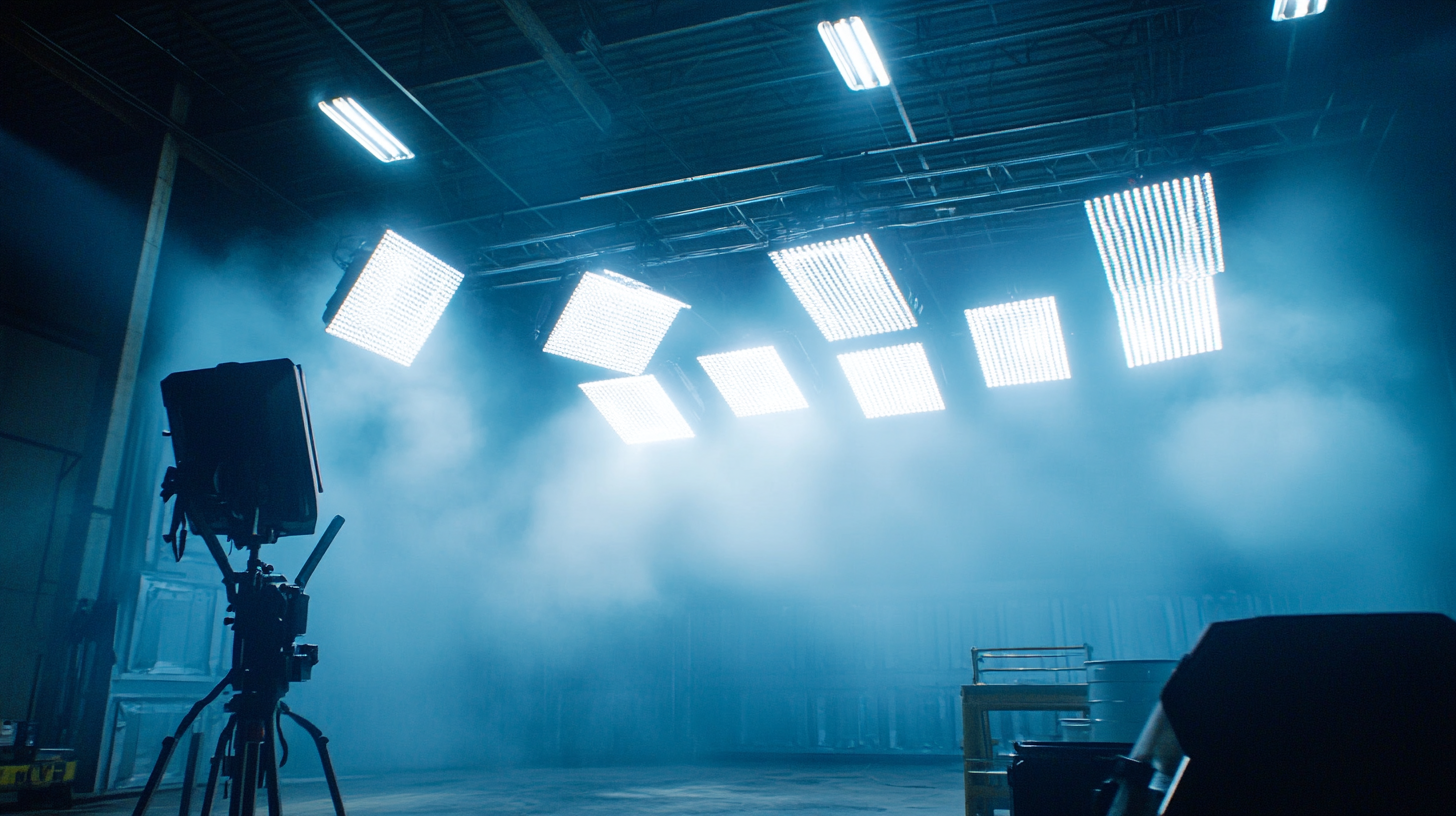Challenges Faced with Bright Led Lamp Procurement
In today's fast-paced world, the demand for energy-efficient lighting solutions has led to a significant rise in the popularity of Bright LED Lamp technologies. These lamps are not only known for their exceptional luminosity but also for their longevity and reduced energy consumption, making them an attractive option for both residential and commercial applications. However, the procurement of Bright LED Lamps comes with its own set of challenges that can complicate the decision-making process. From navigating the vast array of products available in the market to ensuring compliance with quality standards and sustainability practices, stakeholders often find themselves facing hurdles that delay or complicate their purchasing decisions. This blog will delve into these challenges, exploring the factors that influence effective procurement while highlighting potential solutions to ensure a smooth and successful purchasing experience for Bright LED Lamps.

Identifying Key Challenges in Bright LED Lamp Procurement Processes
When it comes to the procurement of bright LED lamps, various challenges can arise that significantly impact the efficiency and effectiveness of the process. One of the primary issues that many face is the lack of standardization in product specifications. Different manufacturers may offer similar products with varying luminosity, energy efficiency, and longevity claims, complicating the decision-making process for purchasers. This can lead to confusion and potential mismatches between expected performance and actual outcomes.
Additionally, the procurement process can be hindered by budget constraints and procurement policies that prioritize cost over quality. While opting for the cheapest option may seem appealing, it often results in higher long-term costs due to frequent replacements and increased energy consumption. Moreover, navigating logistics and supply chain issues can further complicate procurement efforts. Timely delivery is crucial, as delays can directly affect operations, particularly for businesses that rely heavily on consistent lighting standards.
To enhance the effectiveness of LED lamp procurement, it is essential to conduct thorough research and establish clear criteria that emphasize quality and performance alongside cost. Collaborating with trusted suppliers and staying updated on the latest advancements in LED technology can also aid in overcoming these challenges and ensuring that the right lighting solutions are chosen to meet specific needs.

Understanding Supplier Variability and Its Impact on Quality Assurance
When procuring bright LED lamps, one of the most significant challenges faced by buyers is the variability among suppliers. Each supplier may have different manufacturing processes, quality control measures, and standards that can drastically affect the final product. This inconsistency can lead to significant variations in brightness, color temperature, and overall longevity of the LED lamps. Such discrepancies not only impact the effectiveness of lighting solutions but can also compromise the reliability that consumers expect.
Moreover, understanding supplier variability is crucial for implementing effective quality assurance measures. This requires a comprehensive evaluation of potential suppliers, including their production capabilities and quality management systems. By fostering strong communication and collaboration with suppliers, companies can develop better strategies to standardize quality across their product lines. Regular audits and performance reviews can also help mitigate risks associated with supplier variability, ensuring that the LED lamps meet the required specifications and perform optimally in various applications. Ultimately, addressing these challenges can lead to a more consistent and reliable product, enhancing customer satisfaction and brand loyalty in a competitive market.
Challenges Faced with Bright LED Lamp Procurement
This chart illustrates the variability in quality assurance levels from different suppliers of Bright LED lamps. Each bar represents a supplier, showcasing the percentage of quality assurance issues reported.
Navigating Compliance and Regulatory Standards in LED Lighting
When it comes to procuring bright LED lamps, compliance and regulatory standards present significant challenges that can complicate the purchasing process. Various jurisdictions impose strict requirements aimed at ensuring safety, energy efficiency, and environmental sustainability. Companies must navigate a complex web of regulations, including certifications that verify products meet established standards. This can result in extended lead times and increased costs, as procurement teams grapple with understanding and adhering to these specifications.
Moreover, the rapidly evolving landscape of LED technology means that regulations can change frequently. Keeping abreast of the latest developments is crucial for compliance. Suppliers may not always provide the necessary documentation, leaving buyers to conduct their own due diligence on the product's conformity to required standards. This can create additional layers of complexity in ensuring that the selected lamp not only performs well but also aligns with all applicable regulations. The procurement process, therefore, requires a thorough strategy to mitigate risks associated with non-compliance, ultimately leading to a successful and lawful acquisition of LED lighting solutions.
Challenges Faced with Bright LED Lamp Procurement
Cost Analysis: Budget Constraints Versus Quality Expectations
In the world of LED lamp procurement, striking a balance between cost and quality remains a significant challenge for many organizations. According to a recent report by the International Energy Agency, the global LED market is expected to reach $75 billion by 2025, driven largely by increasing demands for energy-efficient lighting solutions. However, with the substantial growth in demand comes pressure on budgets, making it essential for procurement teams to navigate their financial limitations while still meeting quality expectations.
A cost analysis conducted by the Lighting Research Center reveals that while cheaper LED options may be appealing, they often underperform in terms of lifespan and energy efficiency. For example, lower-quality LED lamps can have a lifespan of around 15,000 hours, compared to high-quality alternatives that can last over 25,000 hours. This discrepancy not only impacts replacement costs but also affects energy consumption and overall return on investment. As organizations grapple with budget constraints, they must recognize the long-term benefits of investing in higher-quality products that, despite their initial higher price point, ultimately result in lower operational costs and enhanced environmental sustainability.
Moreover, aligning procurement strategies with established performance metrics is critical. The U.S. Department of Energy emphasizes that quality LED products should adhere to rigorous testing standards to ensure reliability. As procurement specialists face tight budgets, the challenge now lies in educating stakeholders about the importance of not compromising quality for the sake of cost savings, thus fostering informed purchasing decisions that align with both financial and sustainability goals.
Challenges Faced with Bright Led Lamp Procurement - Cost Analysis: Budget Constraints Versus Quality Expectations
| Category | Budget Allocation ($) | Quality Expectations | Supplier Performance Rating | Comments |
|---|---|---|---|---|
| Cost Efficiency | 5,000 | Standard | 4/5 | Meets expectations but limited options |
| Quality Assurance | 7,000 | High | 5/5 | Excellent performance; higher cost |
| Long-term Savings | 4,500 | Moderate | 3/5 | Adequate, but not cost-effective long-term |
| Supplier Variability | 6,000 | Variable | 2/5 | Inconsistent quality; risk in procurement |
Supply Chain Disruptions: Strategies for Mitigating Risks in Procurement
Supply chain disruptions have become a pressing concern for companies procuring bright LED lamps, and understanding how to mitigate these risks is crucial for maintaining business continuity. The ongoing global uncertainties, driven by factors such as geopolitical instability, economic fluctuations, and unforeseen events like the pandemic, necessitate a robust risk management strategy. Organizations must remain vigilant about the trends impacting their supply chains and be prepared to adapt their procurement strategies accordingly.
Implementing effective risk mitigation strategies is essential for resilience in procurement processes. Companies should prioritize supplier diversification to reduce dependency on single sources and enhance flexibility. Additionally, investing in advanced technologies for supply chain visibility can aid in identifying potential disruptions early, allowing businesses to respond proactively. It’s also critical to establish strong relationships with suppliers based on transparency and communication, which can significantly enhance collaborative problem-solving during crises.
Furthermore, embracing sustainability as part of the procurement process not only mitigates risks but also aligns with consumer demand for environmentally responsible practices. By integrating sustainability into their strategies, companies can improve supply chain reliability while also preparing for future challenges. This comprehensive approach can better position organizations to navigate the complexities of modern supply chains effectively.

